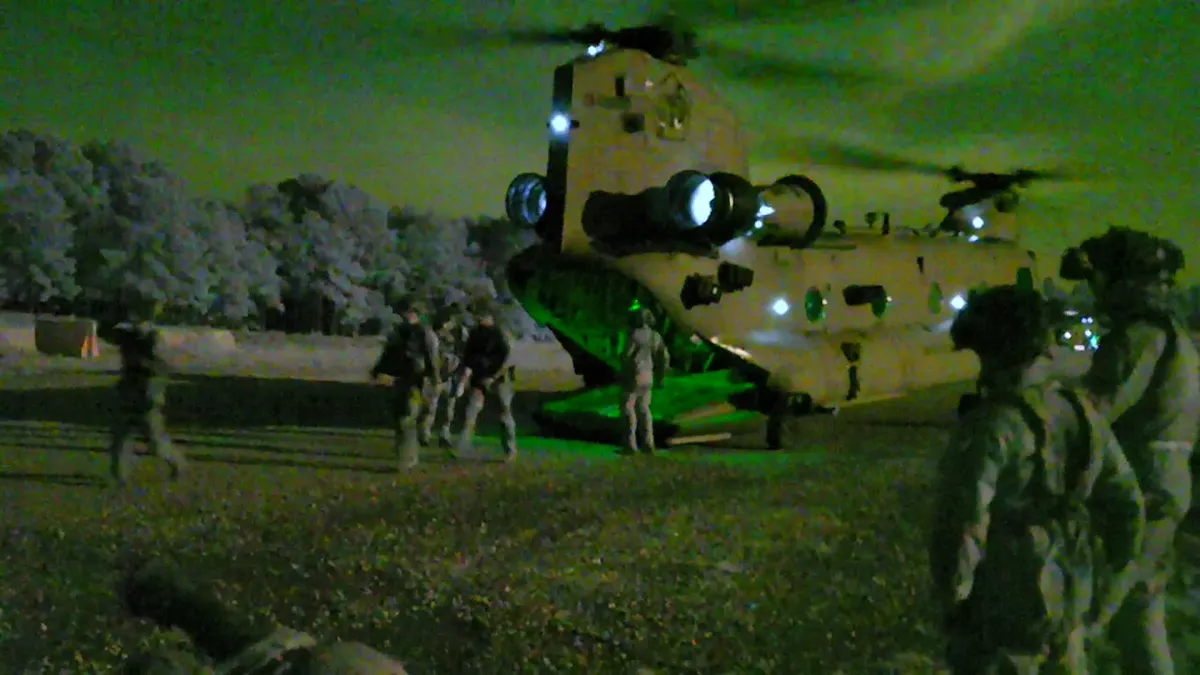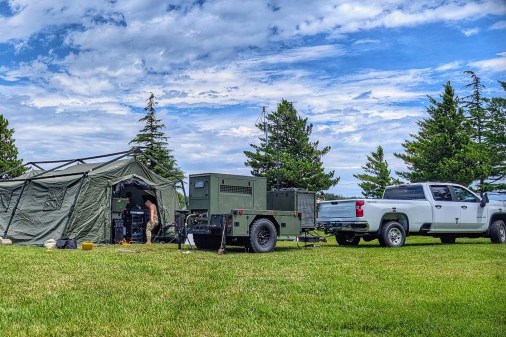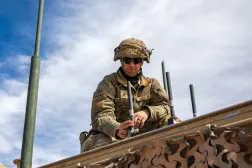Army units able to communicate more dispersed in recent exercise

This is the first part of a two-part series exploring communications upgrades and fixes the Army is pursing while using experimentation to modernize. Click here to read part two.
FORT JOHNSON, La. — Networking capability upgrades are allowing Army units to fight in a more dispersed manner and at lower levels of classification.
A key tenet of future combat will be the need to move faster and scatter on the battlefield to avoid being targeted. Lessons from both Russia’s incursion into Ukraine in 2014 and Moscow’s full-scale invasion of its neighbor in 2022, have indicated conflicts will be much faster paced and the large static command posts that were used by the U.S. military during its recent counterinsurgency fights won’t be suitable. American forces must be more nimble to prevent adversaries from locating and attacking them.
The Army’s network team has been on a multiyear journey to modernize tactical communications and make units lighter, faster, smaller and able to pass and share more information. Those efforts were ahead of their time in many instances as they employed the rapid feedback loop that the so-called “transforming-in-contact” concept is striving for, with one official saying they are “very comfortable” with this tight linkage and feedback mechanism.
Capabilities for command, control and communication have allowed units to operate in much smaller command posts and even split their staff sections by function rather than all having to be in one command center that could be targeted and take them all out.
This was the case for both 2nd Brigade, 101st Airborne Division and 1st Battalion, 509th Infantry Regiment during a recent rotation at the Joint Readiness Training Center at Fort Johnson, Louisiana. The later unit is known as “Geronimo” and serves as a highly capable opponent for units rotating into these centers.
“It’s the ability to do this app-based and a true common operating picture, because you can seamlessly move between applications,” Col. Matthew Hardman, commander of the operations group at JRTC that runs the opposing force, said during a recent visit to the base to observe 2nd Brigade’s rotation, a key unit as part of the Army’s transforming-in-contact concept. That vision calls for using deployments and troop rotations to test new equipment — mainly commercial off-the-shelf gear — that could allow units to be more responsive on a dynamic battlefield.
Hardman noted that the footprint of Geronimo’s command post is very small, using the Integrated Tactical Network to build out capabilities and applications.
Throughout the Army’s years-long process to upgrade its network, modernized equipment has significantly shrunk the size of command posts. Smaller, more mobile command posts pose more challenging targeting problems for adversaries.
One of the innovations that allows for that shrinkage — just a couple of trucks instead of instead of large, sprawling, and often relatively static outposts — and reduced electronic emissions, is what the Army is dubbing antenna farms. During the recent exercise at Fort Johnson, those so-called farms produced all the communications for the brigade command post, which was dispersed physically from the main command post, whereas before it was co-located.
While the farm did have a signature, communications capabilities such as directional radios and proliferated low-Earth orbit satellites made it difficult for the adversary to discover it in the spectrum, unlike other capabilities such as WiFi or high-frequency systems.
During the exercise, the opposing force wasn’t able to distinguish if this was a brigade command post or a lower echelon given the small footprint and lower electromagnetic signature. Now, the enemy has to be more discretionary in terms of deciding what to hit because they don’t want to waste artillery or give away their position to attack a smaller echelon. They’re looking for bigger payoffs like a brigade or division command post.
The antenna farm is much quicker to set up and take down than previous communications setups. Officials at JRTC noted that in the past it could take 30 to 45 minutes with no troubleshooting issues to establish the network. Now, it takes close to 10 minutes, with officials saying they are waiting on the brigade command post to plug their network in or drive away, a huge distinction from the past.
Officials also explained that command, control and communications capabilities have allowed the staff sections within the brigade to disperse even more. Historically, staff for current operations, intelligence, fires and many other functions, would all be housed within the sprawling command post to run operations for the fight. This contributed to the large size.
Now, those staff sections can be separated, resulting in smaller command posts that might resemble something like a company or battalion.
Crosstalk within the command post “was very human-based, very human-centric, using our various warfighting function capabilities and bringing those together,” Maj. Gen. Brett Sylvia, commander of the 101st Airborne Division, said. “Instead of that massive humanity and all those computers … it’s a much more simple setup and a simple system, though just as capable as the one that it had, as we are integrating many of our network systems.”
While the technology is allowing that disaggregation, network officials have explained that it’s creating human problems because commanders now have to get used to communicating to all their staff sections dispersed on the battlefield as opposed to just walking up to them in the command post.
Moreover, as part of its rotation at JRTC, 2nd Brigade, 101st Airborne conducted a roughly 500-mile air assault from its home at Fort Campbell, Kentucky, to Fort Johnson in Louisiana to start the exercise.
During that effort, it had upgraded communications equipment that is part of the integrated tactical network, to include putting HMS manpack radios — the same that are used by dismounted soldiers — into helicopters, providing MUOS beyond-line-of-sight satellite comms. Previously, those aircraft only had chat functions and could only send position location information.
Those capabilities provided continuous and more robust communications tools to the unit for the entire 500-mile journey and entry into JRTC.
“If you were at JRTC, you would have seen for the first time both voice and data integration between our aerial platforms and our ground formations. And it was powerful. No more having to pick up a handset and say, ‘This is where I’m at,’” Lt. Gen. John Morrison, deputy chief of staff, G6, said at the Defense News Conference Sept. 4. “Everybody having common [situational awareness] of what is happening, whether you’re in the air or on the ground.”
Network officials noted that with the commercialization and intuitiveness of tools now, there is less time needed to get equipment to units to become familiar with and train. Previously, with new capabilities or upgrades, the program office would have to give the technology to the unit ahead of exercises or events to allow them to familiarize themselves. That timeline is becoming shorter and shorter.
One of the other major changes for this exercise rotation was that most of the data used was unclassified. The Army has been on a push to lower the classification of communications and data on the battlefield to increase speed. Classification is often a barrier to sharing with international partners and slows down operations. But, by developing an unclassified-encrypted capability, or SBU-E, where perishable data can be lowered, network complexity is reduced.
The Army is simultaneously pursing a dual effort to provide improved capabilities to help soldiers be ready to “fight tonight” in the near term, while looking toward a future permanent solution. Those projects have been dubbed C2 Fix and C2 Next, respectively.
“One of the key tenets of both C2 Fix and next-gen C2 is this notion of using commercial encryption to provide sensitive but unclassified-encrypted communications. I will submit, as we fully implement that, that will be a game-changer for coalition interoperability, especially at the edge,” Morrison said. “The days of having to send a radio telephone operator over to an allied partner’s command post so that they can use your radio to talk back to you, will be a thing in the past. We are aggressively implementing that as a part of C2 Fix.”
Part two of this series will delve deeper into the C2 Fix and C2 Next initiatives.






